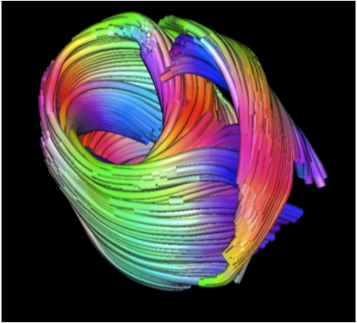The complex active and passive physiological events occurring during heart cycle are related to the complex structure of the heart. Although ventricular architecture remains a controversial topic mainly due to the lack of in-vivo and true 3D measurement techniques, understanding the morphologic, physiologic and clinical aspects of heart diseases and determining the optimal therapeutic approaches can be greatly facilitated by novel imaging techniques and models.
Until now, the lack of easily applicable non-invasive techniques to study the LV myofibre architecture in relation to the spatio-temporal sequence of regional deformations occurring during cardiac contraction and relaxation has prohibited extensive in- vivo experiments.
The great challenges would be then to develop a robust in-vivo free-breathing Diffusion Tensor (DT)-MRI technique applicable in experimental and clinical setups, propose appropriate multi-physics data processing methods, and correlate within a unique reference the indicators obtained from multi-physics data acquisition and modelling with clinics.
Research Axes
Our projects are:
in-vivo cardiac DT-MRI
To design a robust in-vivo free-breathing DT-MRI technique applicable in experimental and clinical setups (collaboration NIH, H.Wen; PhD Thesis S. Rappachi). We have already obtained preliminary in-vivo results with free breathing acquisitions in humans that bring new perspectives toward robust in-vivo clinical cardiac DT-MRI, even for uncooperative or patients in poor conditions.
Impact of the regularization on in-vivo data. Left to right: parametric maps ordered as follows: MD, FA and PDD field. Top: parameters computed from the tMIP raw DW images. Bottom: parameters computed from the tMIP regularized DW images
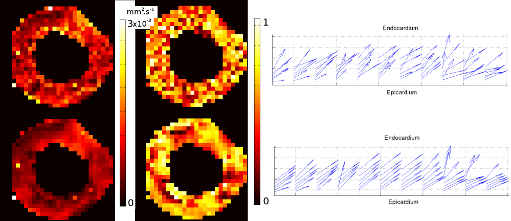
Impact of the regularization on in-vivo data.
Tackling motion issue with temporal Maximum Intensity Projection(tMIP)-DWI and first results in humans. The purpose is to develop a diffusion weighted imaging (DWI) approach that can cope with physiological motion and demonstrate its feasibility in routine clinical practice
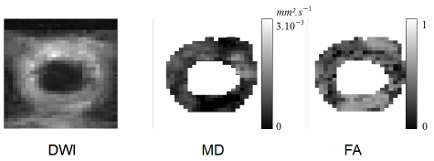
Results from a healthy volunteer: DWI, Mean Diffusion and Fractional Anisotropy maps.
Patient specific cardiac modeling
To build multi-physics heart patient specific model, which integrates in a common reference the heart’s shape, tissue properties and dynamics.
3D static segmentation using DET3 finite element model (Deformable Elastic Template 3D). It is a deformable volumetric model submitted to external constraints imposed by the image
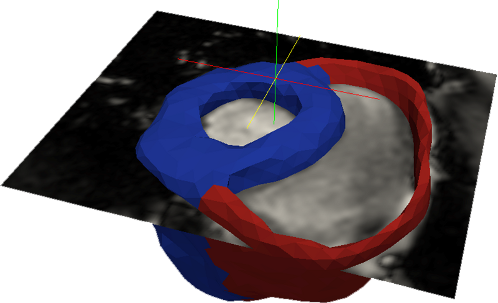
3D static segmentation of the heart.
2D dynamic segmentation using Dynamic DET model. It is a spatio-temporal extension of the DET model, controlled by a simplified Dynamics equation
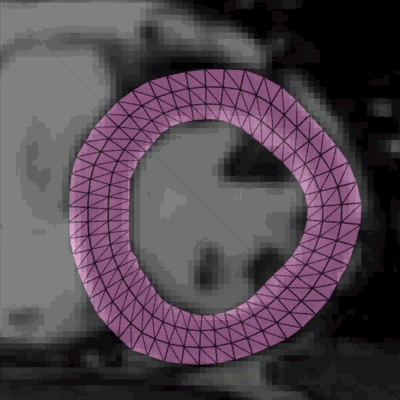
2D dynamic segmentation of the left ventricle.
Clinical applications
The objectives are to refine our understanding of structural/function changes involved in remodelling processes that occurs in several cardiomyopathies from patient specific cardiac models.

